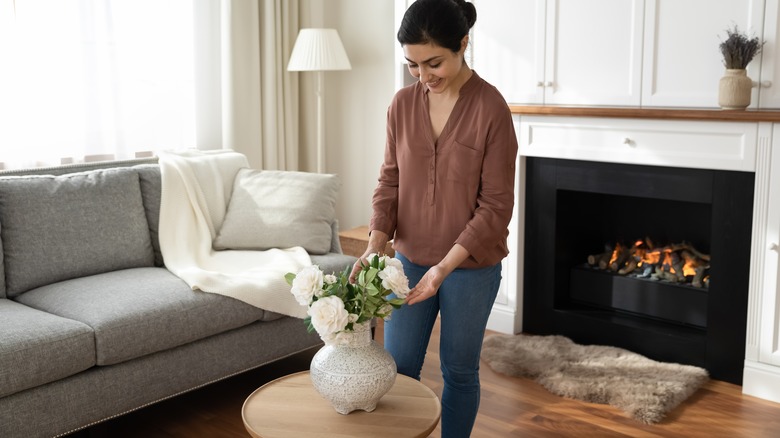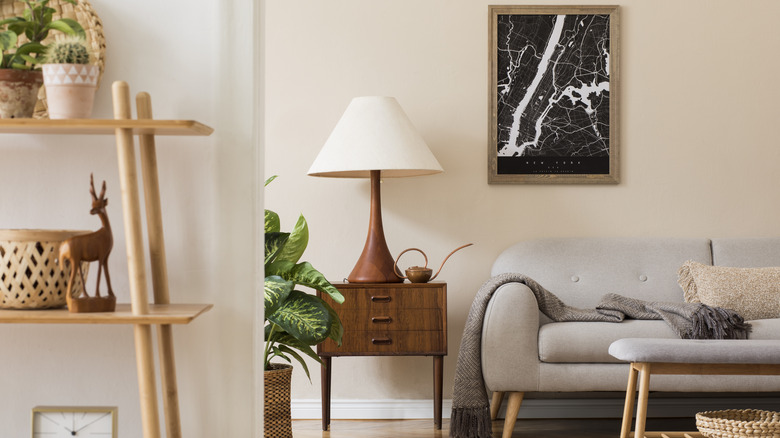Follow This Home Decor Trick To Add Style, Not Clutter
Styling your house can sometimes be tricky. You get into the groove of buying different furniture and decor pieces, and at first, everything is gelling well. But then overnight, it seems like the space becomes cluttered and it looks overrun with things. You might not have a minimalist aesthetic, but there is a fine line between "curated" and "crowded." If this is the predicament you're in, then you'll be happy to know there is an easy solution for this. You need to focus on bigger decor items rather than smaller accents.
The idea behind this is that the bigger the accents, the fewer items you will need to fill the space. And when your eye registers fewer items, it will think the room isn't as cluttered. However, that doesn't mean your house will look austere. Since the pieces are larger, they will still make a lasting statement. But that doesn't mean you should buy XL table lamps and huge statues. There is an art to choosing something proportional. Here is a closer look into the design tip.
Buy bigger decor items to reduce clutter
When you're designing vignettes on a sideboard or shelf, you might feel tempted to fill them with smaller knick-knacks, petite vases, or cute, small houseplants. The reason for this is multifold. First, smaller accessories are usually more affordable, so it feels more doable to buy four pettite items for $50 rather than one large vase for $50. Second, you might enjoy sourcing decor, and you get more pleasure from buying multiple small items rather than exercising control and investing in one chunkier piece. However, as interior designer Ana Messina Egger explains in her Instagram reel, this creates too much visual clutter.
"The reason I hate [small items] is because typically when it comes to small accessories people tend to overcrowd and clutter their space," she wrote in her caption. "Instead, opt for a bigger piece. It will make your space feel a lot higher end and intentional!" Bigger pieces are more proportional with bigger pieces of furniture. If you're styling a chunky sideboard or large dining room table, it only makes sense to add denser decor items. Plus, if you crowd three small items to create a vignette, you'll likely spend the same amount of money as getting one larger vase or plant. But by having less, you signal that your space is tightly curated and that you invested in the pieces on display. It exudes a more designer look this way.
Caveats to keep in mind
So, does this mean that you should toss out all of your small knick-knacks? The short answer is no. You just need to know when to use them. Egger says they're great to add to a bathroom, mainly because it's a smaller space and calls for smaller accessories. They can also be useful to group with other large accessories, adding dimension with varying sizes. You can also place your smaller knick-knacks on smaller pieces of furniture. For example, a squat plant would look great on a thin side table and a petite frame would look nice decorating a nightstand.
Egger also warns that you don't want to overdo it with the large knick-knacks. "Just don't buy all huge accessories/ or all accessories the same size," she points out in her caption. While you want to focus on bulkier items, you also want to make sure they come in different sizes, heights, and widths, ensuring the space doesn't end up looking too uniform. If it does, it will come off as one-dimensional or flat. For example, if you have 12-inch taper candles on your side table, add a 16-inch plant a foot or so away to create some variety.

